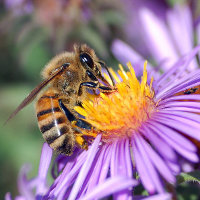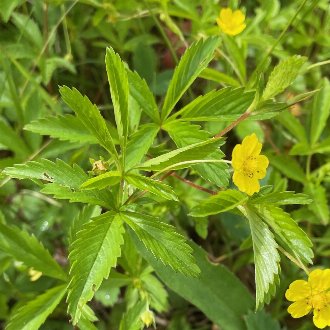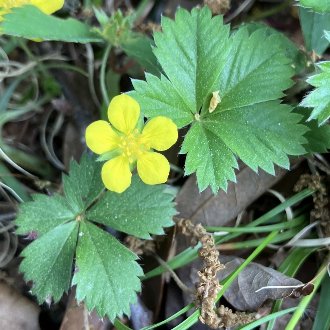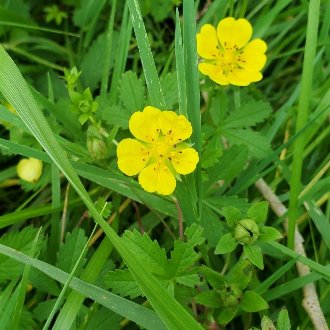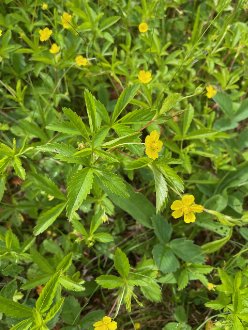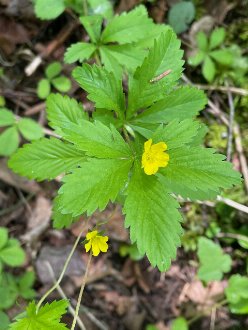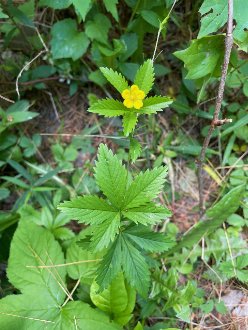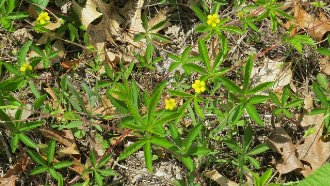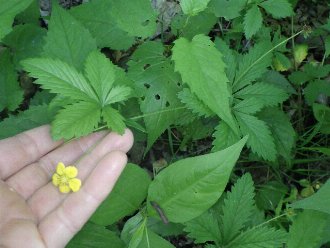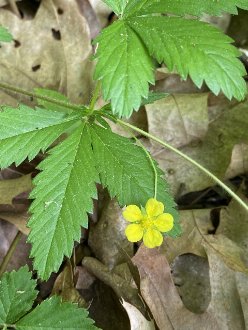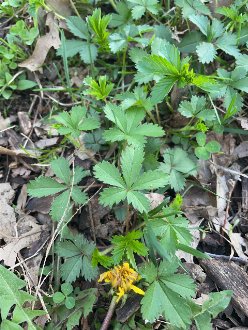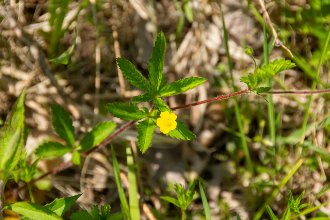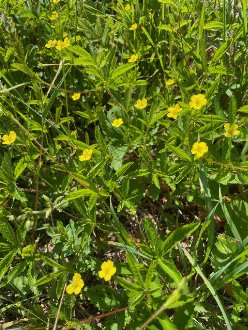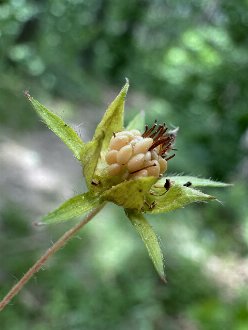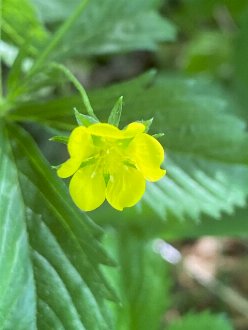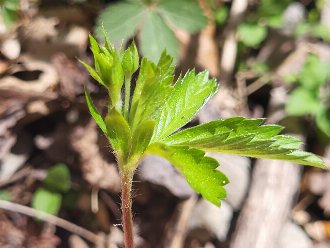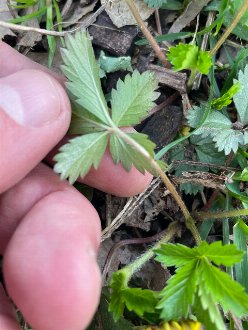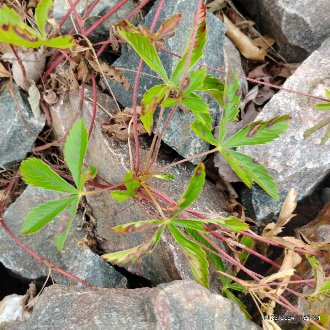Common Cinquefoil (Potentilla simplex Michx.)
↑Summary
A sprawling perennial native to eastern North America, found on sunny to partly-sunny sites.
↑Range - Expand
| Legend | Color |
| Native | |
| Native or Not Present |
This tentative map is based on our own research. It may have limited data on Canada and/or Mexico, and there is some subjectivity in our assignment of plants as introduced vs. expanded. Read more in this blog post.
Although this plant occurs somewhere in each of these regions, it may only occur in a small part of some or all of them.
↑Similar Plants
↑Habitat
Common cinquefoil is found in a wide range of sunny to partly-sunny habitats; this species is quite a generalist, which is reflected in its occurrence in a wide variety of habitats and conditions. Natural habitats include black soil prairies and other tallgrass prairies, savannas, large openings in upland forests, bluffs, gravely seeps, and well-drained portions of streambanks and sunny floodplains. It also is common in anthropogenic habitats, including abandoned fields, pastures, roadsides, railroads, lawns, and other open, disturbed areas.
This species is largely indifferent to moisture conditions, being absent only from the two extremes. It is absent from dry sites in the south of its range, being restricted to dry-mesic conditions or moister, and more common in floodplains there. In the north of its range, it also ranges into dry conditions and is more abundant in mesic conditions. It requires good drainage, and in floodplains is restricted to locally well-drained sites. In the southeast, it often occurs on sites that are wet in winter and spring and become drier in summer.
It similarly inhabits a broad range of soil pH, from moderately acidic to slightly alkaline. It also can occur both on disturbed and undisturbed sites, but on undisturbed sites it is more limited to habitats such as prairies or savannas where the soil and/or climate conditions create persistent open conditions and prevent a closed tree canopy from establishing.
It tends to occur on sites where there is significant ground-level competition from robust, tall grasses, and can survive under some shade from trees and shrubs as long as it gets significant direct sunlight for part of the day. It is absent from sites with a closed tree canopy or even only small gaps in the canopy. It similarly cannot compete against tall, broadleaf herbaceous vegetation such as is found on rich, moist sites in humid climates.
↑Faunal Associations
The foliage is eaten by rabbits and groundhogs. These herbivores may inadvertently also consume seeds, which then pass through the digestive tract intact, helping to distribute this plant to new locations.
The flowers attract a large variety of small pollinators.
↑Notes
The common name "common cinquefoil" is one of the more accurate common names, as this species has the largest range and is the most generalist and usually most abundant of the cinquefoils (five-leaved Potentilla species) in Eastern North America.
↑Links & External Resources
• Potentilla simplex (Common Cinquefoil) | Illinois Wildflowers (About This Site)
• Potentilla simplex (common cinquefoil) | USDA PLANTS Database (About This Site)
• Potentilla simplex | Go Botany (About This Site)
• Potentilla simplex | Biota of North America Project (BONAP) (About This Site)
• Potentilla simplex | NatureServe Explorer (About This Site)
• Potentilla simplex | Flora of North America (About This Site)
• Potentilla simplex | Missouri Plants (About This Site)
• Common Cinquefoil | Maryland Biodiversity Project (About This Site)
• Potentilla simplex (Common Cinquefoil) | Minnesota Wildflowers (About This Site)
• Potentilla simplex Michx. (Common Cinquefoil) | Digital Atlas of the Virginia Flora (About This Site)

